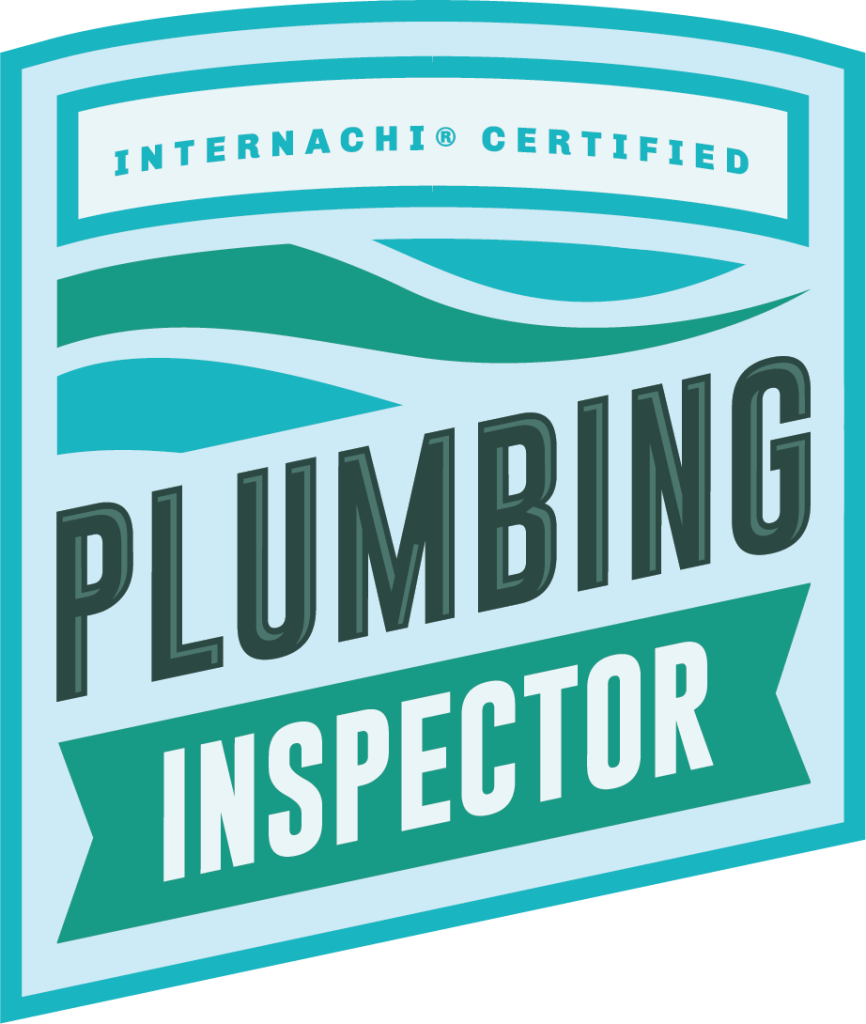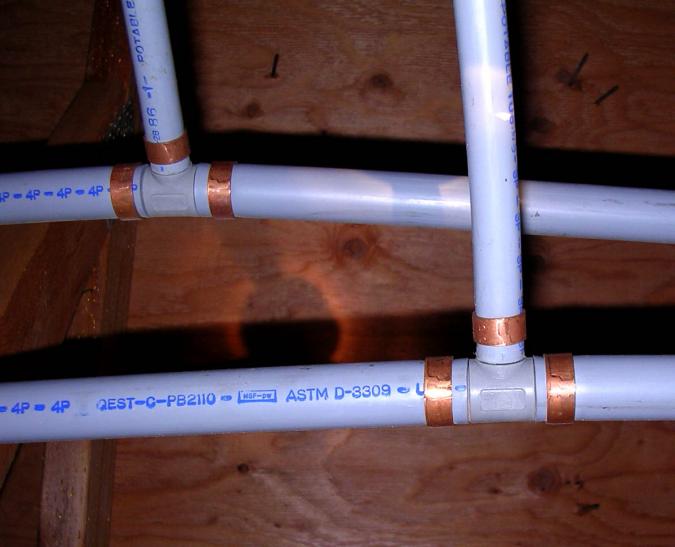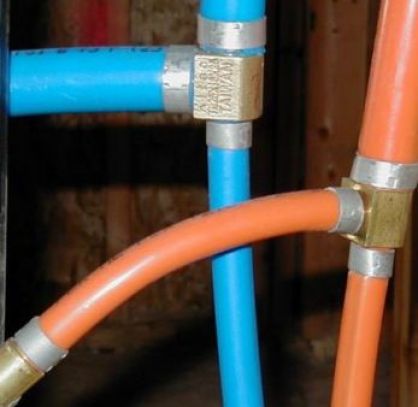Polybutylene & Kitec Piping

What is Polybutylene & Kitec Piping?
Polybutylene is a form of plastic resin that was used extensively in the manufacture of water supply piping from 1978 until 1995. Due to the low cost of the material and ease of installation, polybutylene piping systems were viewed as “the pipe of the future” and were used as a substitute for traditional copper piping. It is most commonly found in the “Sun Belt” where residential construction was heavy through the 1980’s and early- to-mid 90’s, but it is also very common in the Mid Atlantic and Northwest Pacific states.
The piping systems were used for underground water mains and as interior water distribution piping. Industry experts believe it was installed in at least 6 million homes, and some experts indicate it may have been used in as many as 10 million homes. Most probably, the piping was installed in about one in every four or five homes built during the years in which the pipe was manufactured.

How to Tell If You Have Poly
Exterior – Polybutylene underground water mains are usually blue, but may be gray or black (do not confuse black poly with polyethelene pipe). It is usually 1/2″ or 1″ in diameter, and it may be found entering your home through the basement wall or floor, concrete slab or coming up through your crawlspace; frequently it enters the home near the water heater. Your main shutoff valve is attached to the end of the water main. Also, you should check at the water meter that is located at the street, near the city water main. It is wise to check at both ends of the pipe because we have found cases where copper pipe enters the home, and poly pipe is at the water meter. Obviously, both pipes were used and connected somewhere underground. Interior – Polybutylene used inside your home can be found near the water heater, running across the ceiling in unfinished basements, and coming out of the walls to feed sinks and toilets. Warning: In some regions of the country plumbers used copper “stub outs” where the pipe exits a wall to feed a fixture, so seeing copper here does not mean that you do not have poly.
Will the Pipes Fail?
While scientific evidence is scarce, it is believed that oxidants in the public water supplies, such as chlorine, react with the polybutylene piping and acetal fittings causing them to scale and flake and become brittle. Micro-fractures result, and the basic structural integrity of the system is reduced. Thus, the system becomes weak and may fail without warning causing damage to building structure and personal property. It is believed that other factors may also contribute to the failure of polybutylene systems, such as improper installation, but it is virtually impossible to detect installation problems throughout an entire system. Throughout the 1980’s lawsuits were filed complaining of allegedly defective manufacturing and defective installation causing hundreds of millions of dollars in damages. Although the manufacturers have never admitted that poly is defective, they had agreed to fund the Class Action settlement with an initial and minimum amount of $950 million.
“A series of reports have suggested that increased use of choloramines accelerates corrosion and degradation of some metals and elastomers common to distribution plumbing. With regard to elastomers, the study showed that with few exceptions, solutions of chloramines (either monochloramine or dichloramine) produced greater material swelling, deeper and more dense surface cracking, a more rapid loss of elasticity, and greater loss of tensile strength than equivalent concentrations of free chlorine.”
—-Steven Reiber, HDR Engineering, American Water Works Association Research Foundation

How to tell if you have Kitec
Kitec plumbing is a polymer pipe, typically installed in homes between 1995 and 2007, that is prone to spontaneously burst. While you can take steps to prevent leaks from these this type of piping, Kitec pipes are more likely to crack at any minute and cause major damage to your home. A major leak of this sort can not only cause serious damage to homes, but can also result in mold, mildew, and extremely high repair costs.
About Kitec Piping
Kitec piping was originally installed because it was believed to be a cheaper and more efficient alternative to copper piping. It was commonly used between 1995 and 2007 because of its low cost and ease of installation.
The first recalls of Kitec piping occurred in 2005, which suggests that the lifespan of Kitec can be approximately 10 years. However, industry professionals predict that failure rates of Kitec will only increase over time and most, if not all, homes with this plumbing will experience premature pipe failure.

Why is Kitec a Problem?
The brass fittings that connect Kitec piping contain high amounts of zinc, which breaks down when exposed to moisture and oxygen in a process called dezincification. Zinc oxide then causes blockages in the piping, which results in bursts.
Aside from the makeup of the fittings, the pipes themselves only are able to handle a maximum temperature of 180 degrees Fahrenheit. However, hot water tanks can go beyond this temperature, also causing the pipes to break down.
Class Action Lawsuit
Although the manufacturer, IPEX, denied that there were any serious issues with the piping, class action lawsuits were filed in both the United States and Canada. This resulted in the pipes being recalled and a $125 million settlement.
The lawsuit also includes other IPEX products in addition to Kitec®. Many of these are solid wall PEX pipes with no layer of embedded aluminum. To the best of our knowledge, there have been no premature material failures with these pipes*.
IPEX and their insurance company settled, and set up a $125 million fund to compensate those with Kitec® failures. We don’t know if the issue is limited to areas with certain water chemistry, for example, or whether there were manufacturing issues with some of the product. The other issue is dark spots and/or blisters forming on the pipe*.
If you’ve already experienced damage due to Kitec, filing a claim form to collect from the settlement fund can be done online.
Do I Have Kitec Plumbing?
Kitec is flexible, polymer piping and has a thin layer of aluminum between an inner and outer layer of plastic piping.
There are a few things you can look for to find out if you have this type of piping:
- The distinctive orange and blue piping; though sometimes it is a gray color
- Brass fittings that may have one of the following identifiers: Kitec, KTC, CSA B137.9/10, or ATSM F1974
- Yellow sticker inside your home’s electrical panel door. Because these pipes can’t be used as an electrical ground, a sticker noting the non-metallic interior water piping may be present.
- Any of the following brand names on pipes:
- AmbioComfort
- AQUA
- KERR Controls
- IPEX
- Plomberie Amelioree
- PlumbBetter
- WarmRite
- XPA
Pahrump Valley & Rural Areas Call: 775-513-6104
Las Vegas Valley Call: 702-551-9920
Email us: scott@widespreadinspect.com
View our Reviews on: Yelp
Find us on: Google
